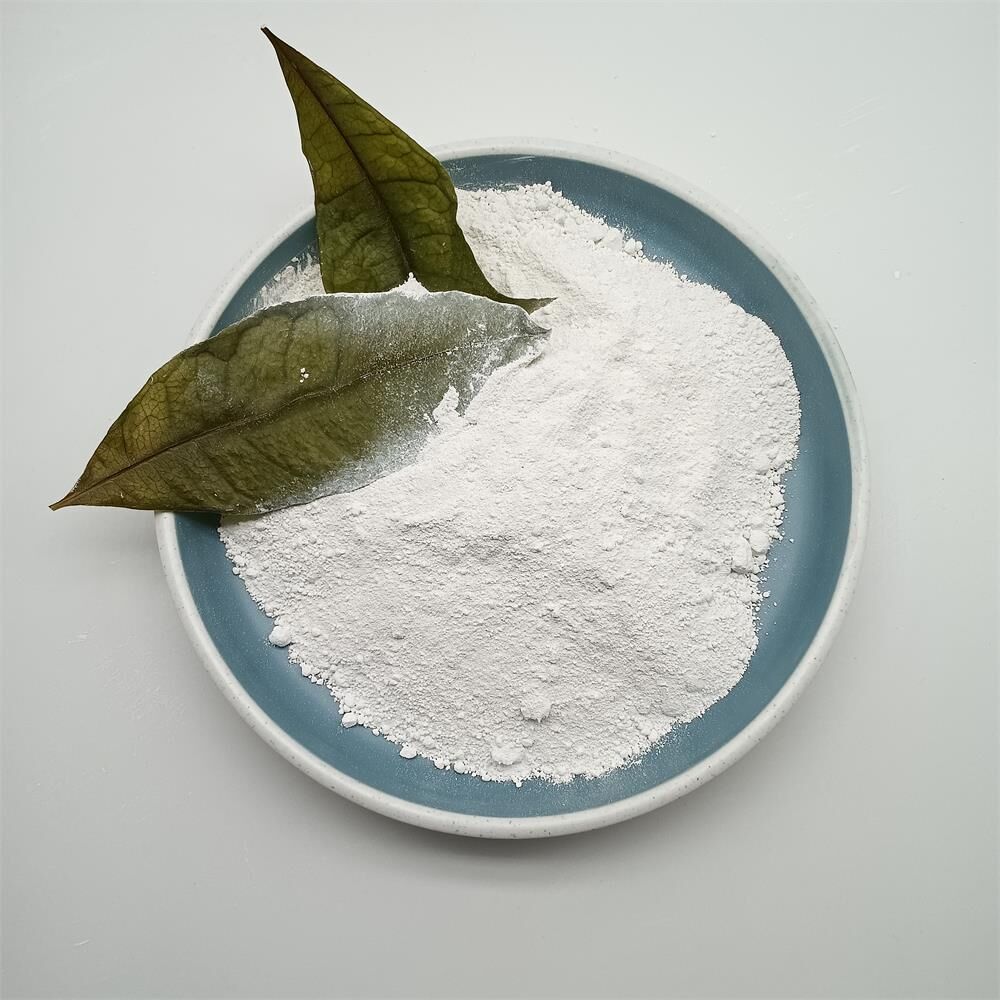-
Make a Call : +86 551 63500087
-
Get A Estimate : sales@gnfchem.com
ما الذي تبحث عنه؟
ما الذي تبحث عنه؟
Make a Call : +86 551 63500087
Get A Estimate : sales@gnfchem.com

ما هي التطبيقات الرئيسية لثاني أكسيد التيتانيوم؟
Oct 23, 2024ثاني أكسيد التيتانيوم (TiO2) له ثلاثة أشكال معدنية، الروتيل، الأناتاز وخام لوحة التيتانيوم، منها طور الروتيل ومرحلة الأناتاس عبارة عن نظام بلوري رباعي الزوايا، مستقر في درجة حرارة الغرفة؛ مرحلة خام التيتانيوم هي نظام بلوري معيني الشكل، والهيكل البلوري غير مستقر للغاية، وفي الوقت الحاضر ليس هناك قيمة عملية كبيرة في الصناعة.
1. ثاني أكسيد التيتانيوم للتحفيز الضوئي
ثاني أكسيد التيتانيوم هو نوع من الأكسيد المذبذب، والذي يمكن أكسدته أو اختزاله في ظل ظروف بيئية معينة. عندما يتم تشعيعها بضوء ذي طاقة أكبر من عرض النطاق الترددي المحظور (المعروف أيضًا باسم فجوة النطاق، على سبيل المثال)، فإن الإلكترونات (e-) الموجودة في نطاق التكافؤ منخفض الطاقة (VB) تكون متحمسة للانتقال إلى نطاق التوصيل عالي الطاقة ( CB)، تاركًا ثقوبًا موجبة الشحنة (h+) في نطاق التكافؤ، الذي يفصل الإلكترونات المولدة ضوئيًا عن الثقوب. تعد الإلكترونات المولدة ضوئيًا في نطاق التوصيل عوامل اختزال جيدة، حيث تقلل جزيئات الأكسجين (O2) لتوليد أيونات الأكسيد الفائق السالبة (-O2-)، والثقوب المولدة ضوئيًا في نطاق التكافؤ هي عوامل مؤكسدة قوية، وتؤكسد جزيئات الماء (H2O) لتوليد جذور الهيدروكسيل (-OH)، ومن ثم يمكن لهذه الأيونات السالبة والجذور أن تحلل الملوثات العضوية في البيئة إلى ماء وثاني أكسيد الكربون. وثاني أكسيد الكربون. من المعترف به على نطاق واسع في الأدبيات أن نشاط التحفيز الضوئي لثاني أكسيد التيتانيوم في طور الأناتاز أفضل بكثير من نشاط ثاني أكسيد التيتانيوم في طور الروتيل. ويرجع ذلك بشكل رئيسي إلى:
1، ثاني أكسيد التيتانيوم الأناتاسي عرض النطاق المحظور على سبيل المثال 3.2eV (الموافق لطاقة الضوء فوق البنفسجي 387.5 نانومتر)، أكبر قليلاً من ثاني أكسيد التيتانيوم الروتيل (على سبيل المثال = 3.0-3.1eV)، ثاني أكسيد التيتانيوم الأناتاسي الناتج عن أزواج ثقب الإلكترون قدرة الأكسدة والاختزال أقوى قليلا؛
في الشكل 2، تحتوي شبكة ثاني أكسيد التيتانيوم في طور الأناتاس على المزيد من العيوب والاضطرابات، والتي يمكن أن تنتج المزيد من الشواغر الأكسجين لالتقاط الإلكترونات، مما يؤدي إلى فصل أسهل للإلكترونات والثقوب المولدة ضوئيًا، في حين أن ثاني أكسيد التيتانيوم في طور الروتيل لديه قدرة امتصاص أضعف نسبيًا للأكسجين.
نظرًا لخصائص الأكسدة والاختزال الضوئية الممتازة، أصبح ثاني أكسيد التيتانيوم النانوي ممثلًا نموذجيًا لمنتجات التحفيز الضوئي (مواد أشباه الموصلات الضوئية ذات وظيفة التحفيز الضوئي). نانو ثاني أكسيد التيتانيوم المطلي على سطح الركيزة، في الضوء فوق البنفسجي والضوء المرئي، يمكن أن ينتج وظيفة تحلل تحفيزي قوية، وتحلل فعال للغازات السامة والضارة في الهواء، ويقتل بشكل فعال مجموعة متنوعة من البكتيريا ويطلق تحلل السموم و علاج غير ضار، ولكن لديه أيضًا إزالة الروائح الكريهة، وإزالة الروائح الكريهة، ومكافحة القاذورات، وتنقية الهواء وغيرها من المهام.
2. يستخدم ثاني أكسيد التيتانيوم في صبغات الطلاء والمضافات الغذائية.
ثاني أكسيد التيتانيوم، والذي يستخدم بشكل أساسي كصبغة بيضاء، يُعرف أيضًا باسم "ثاني أكسيد التيتانيوم" ويعتبر "أفضل صبغة بيضاء في العالم". يتمتع ثاني أكسيد التيتانيوم بأعلى معامل انكسار بين الأصباغ البيضاء، لذلك فهو يتمتع بأعلى قوة تغطية (عتامة)، وقوة لونية وخصائص بصرية أخرى بين الأصباغ البيضاء، بالإضافة إلى البياض الساطع، واللمعان العالي، والتشتت الجيد، وبالمقارنة مع Lidl، فهو لديه جرعة أكثر اقتصادا وعمر خدمة أطول.
تصل نسبة ثاني أكسيد التيتانيوم في مجال الطلاء إلى أكثر من 90%، كما أنه يستخدم على نطاق واسع في الحبر والمواد المضافة للبلاستيك والمطاط وصناعة الورق والنسيج والألياف الكيماوية ومستحضرات التجميل وغيرها من الصناعات.
بالإضافة إلى ذلك، يستخدم ثاني أكسيد التيتانيوم أيضًا في المضافات الغذائية للتبييض والحشو. تم إدراج ثاني أكسيد التيتانيوم باعتباره مادة مسرطنة من المجموعة 2 ب (أي ربما تكون مسرطنة للإنسان) من قبل الوكالة الدولية لأبحاث السرطان (IARC) في عام 2010 وتم تأكيده من قبل لوائح الاتحاد الأوروبي في عام 2020. ويعتقد على نطاق واسع أنه مادة مسرطنة على مستوى النانومتر، ومع التيتانيوم. يعتبر ثاني أكسيد التيتانيوم هو المبيض الوحيد المتاح حاليًا في صناعة المواد الغذائية، وقد تمت إزالة ثاني أكسيد التيتانيوم من تصنيف الاتحاد الأوروبي للمواد المسرطنة في نوفمبر 2022، بعد الجهود التي بذلتها شركات تصنيع الطلاء الأوروبية.
جي ان اف كيم هو محترف الشركة المصنعة للمضافات الغذائية، يرجى متابعتنا والحصول على المزيد من كتالوج المنتجات والأسعار!

Hi! Click one of our members below to chat on